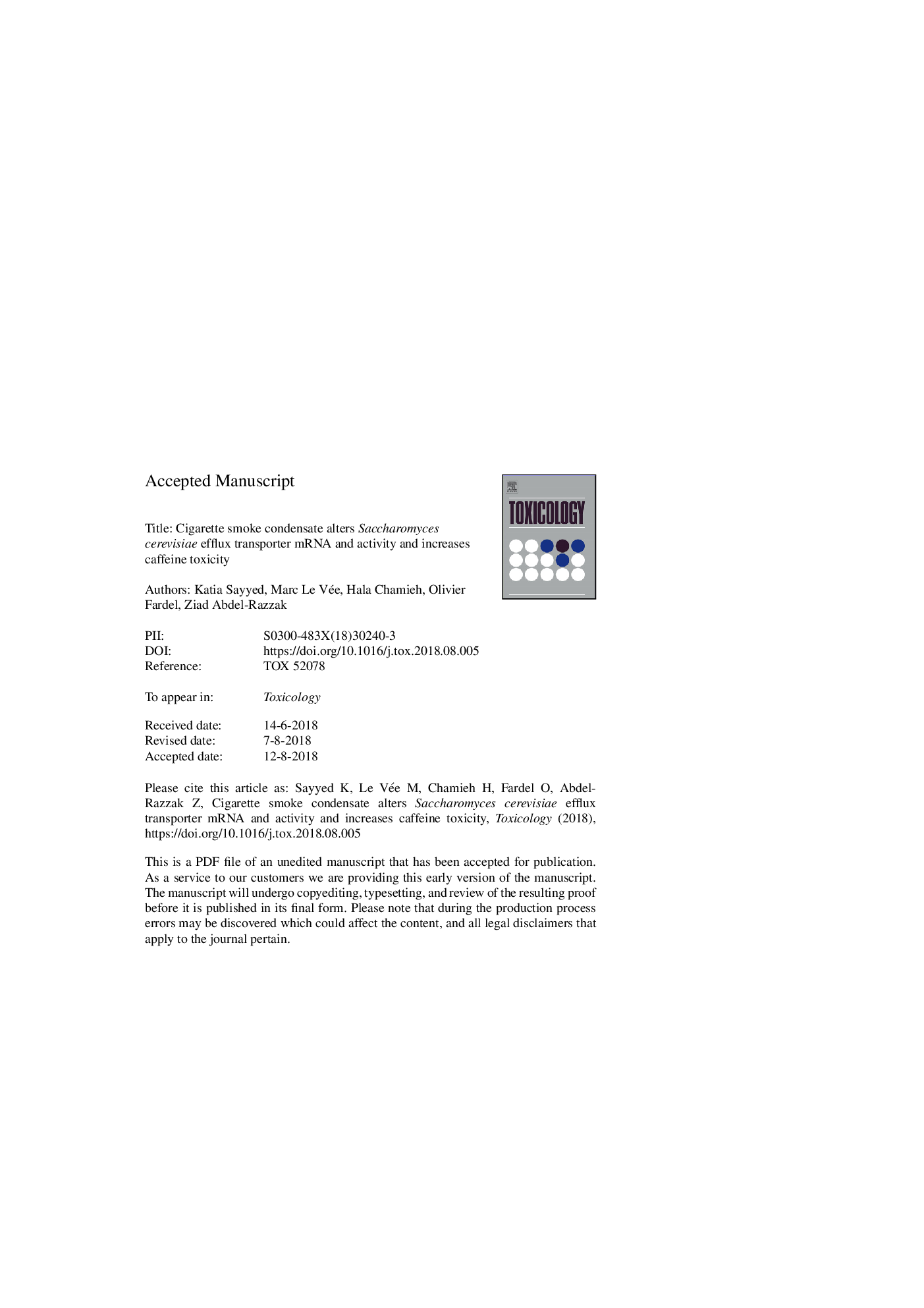| Article ID | Journal | Published Year | Pages | File Type |
|---|---|---|---|---|
| 8552709 | Toxicology | 2018 | 33 Pages |
Abstract
In animals, cigarette smoke may alter pharmacokinetics by altering activity and expression of ABC drug transporters. We previously demonstrated that cigarette smoke condensate (CSC) impairs activity and expression of several hepatic ABC drug transporters which mediate toxicant efflux. However, CSC effects on efflux transporters are still unknown in Saccharomyces cerevisiae which resists diverse chemical stresses, by inducing pleiotropic drug resistance (PDR) genes among others. The yeast ABC transporters are functionally and structurally homologous to the mammalian ones. In this study, Saccharomyces cerevisiae exposure to CSC for 15âmin caused a dose-dependent inhibition of rhodamine 123 efflux, whereas a longer exposure (3âh) induced mRNA expression of the ABC PDR efflux pumps Pdr5, Snq2, Pdr 10 and Pdr15, and of Tpo1, a member of the major facilitator superfamily (MFS). CSC also increased toxicity of caffeine, which is handled by two PDR transporters, Pdr5 and Snq2. Taken together, these data demonstrated that yeast efflux transporters are targets of cigarette smoke chemicals, and that Saccharomyces cerevisiae may cope with CSC-induced stress, including the initial efflux inhibition, by induction of the mRNA of several plasma membrane PDR and MFS efflux transporters. Saccharomyces cerevisiae is therefore a valid model to investigate pollutant effects on ABC and MFS transporters.
Keywords
ABCMFSMRPBcrpTPOPhIPS. cerevisiaeP-gpBAPPDRPDREGSTIC50AαCCSEPDR5Rh123PAHHEK-293qPCRMDRPBSCSCYPd4-aminobiphenylABC transporterDMSOP-glycoproteinBasic Local Alignment Search ToolBlastMajor facilitator superfamilyBenzo(a)pyreneoptic densityCigarette smokeYeast peptone dextroseDimethyl sulfoxideRhodamine 123Saccharomyces cerevisiaehuman embryonic kidney cells 293Cigarette smoke condensatecigarette smoke extractPhosphate-buffered salinereverse-transcriptionPleiotropic drug resistanceMulti-drug resistancehalf-maximal inhibitory concentrationPolycyclic aromatic hydrocarbonsquantitative polymerase chain reactionbreast cancer resistant proteinmultidrug resistance proteinCaffeineATP-binding cassette
Related Topics
Life Sciences
Environmental Science
Health, Toxicology and Mutagenesis
Authors
Katia Sayyed, Marc Le Vée, Hala Chamieh, Olivier Fardel, Ziad Abdel-Razzak,
